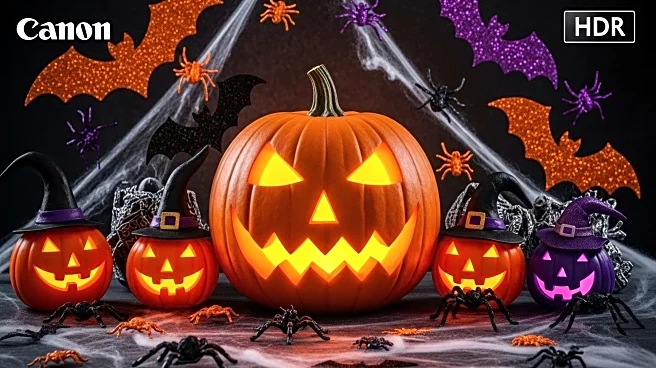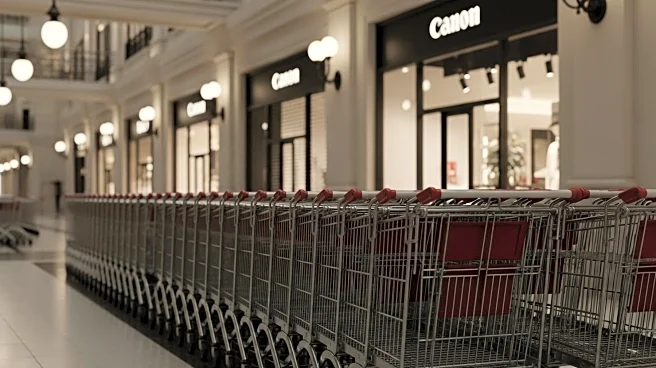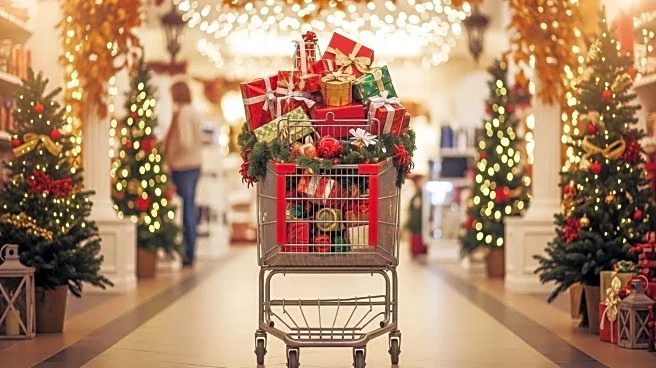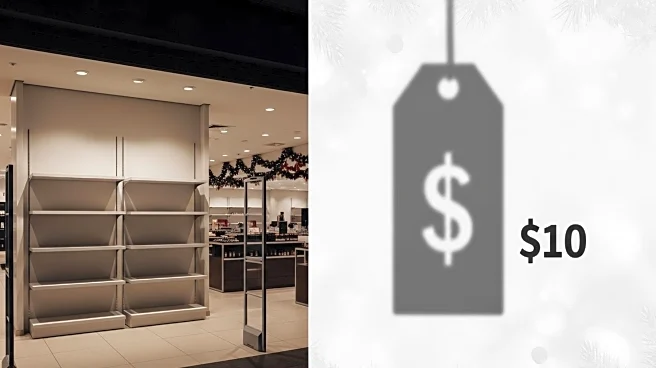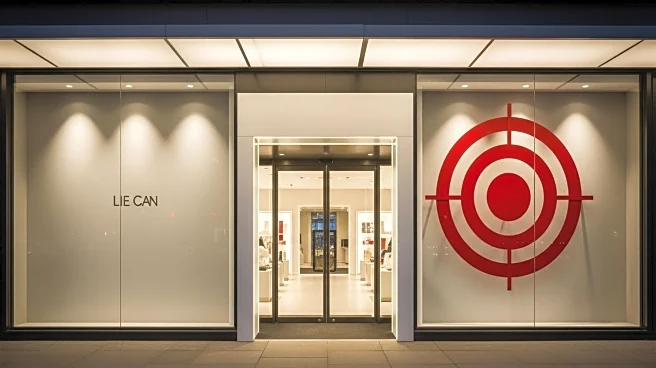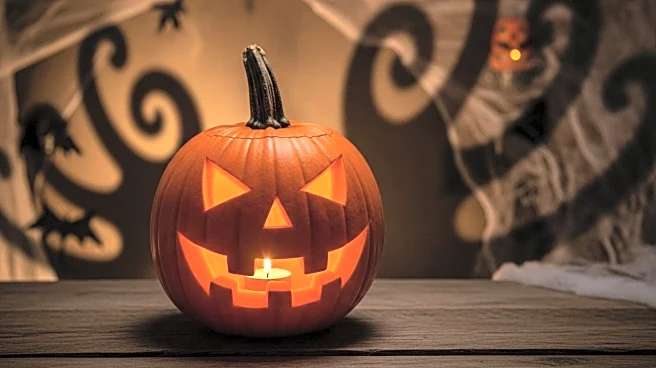What's Happening?
The National Retail Federation (NRF) has projected that consumer spending for Halloween will reach a record $13.1 billion this year, marking a 13% increase from the previous year. This figure surpasses the previous record of $12.2 billion set in 2023. The NRF's annual consumer survey indicates that per-person spending is expected to hit a record high of $114.45, which is nearly $11 more than last year. The spending breakdown includes $4.3 billion on costumes for adults, children, and pets. Despite concerns over tariffs, which 80% of surveyed consumers believe will lead to higher prices, 73% of respondents plan to celebrate Halloween in various ways. The survey, conducted by Prosper Insights and Analytics, involved over 8,000 consumers between September 2 and September 9. Candy remains the most popular purchase, with $3.9 billion expected to be spent on holiday treats. Additionally, 78% of consumers plan to buy Halloween decorations, contributing $4.2 billion to sales.
Why It's Important?
The projected increase in Halloween spending highlights the resilience of consumer enthusiasm for the holiday despite economic concerns such as tariffs. This spending surge is significant for retailers, as it indicates strong consumer demand and the potential for increased sales in the retail sector. Discount stores are expected to benefit, with 42% of consumers planning to shop at these locations, up from last year. Retailers have responded by launching Halloween assortments earlier, with major chains like The Home Depot, Lowe's, and Target introducing themed products well ahead of the holiday. This trend underscores the importance of strategic planning and early marketing efforts in capturing consumer interest and maximizing sales opportunities.
What's Next?
Retailers are likely to continue capitalizing on early consumer interest by expanding their Halloween offerings and promotions. As consumers seek to manage costs, strategies such as early shopping and choosing discount stores will remain prevalent. Retailers may also explore ways to mitigate tariff impacts, potentially through pricing strategies or sourcing adjustments. The ongoing consumer interest in Halloween activities suggests that retailers will continue to innovate and adapt their offerings to meet evolving consumer preferences and economic conditions.
Beyond the Headlines
The record spending on Halloween reflects broader consumer behavior trends, including the prioritization of experiential purchases and seasonal celebrations. This trend may influence retailers to invest more in themed events and products that align with consumer interests. Additionally, the impact of tariffs on consumer spending highlights the interconnectedness of global trade policies and domestic retail strategies, prompting businesses to consider long-term implications and adjustments in their supply chains.

